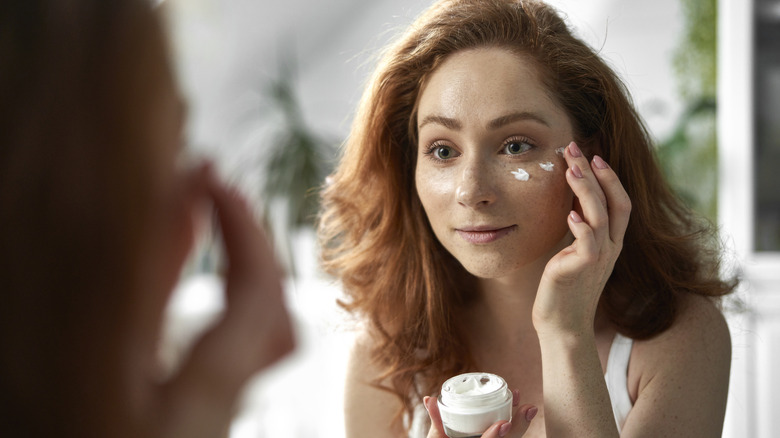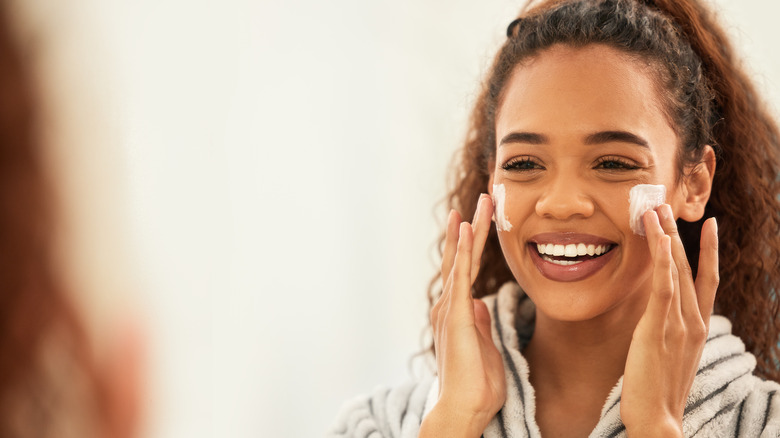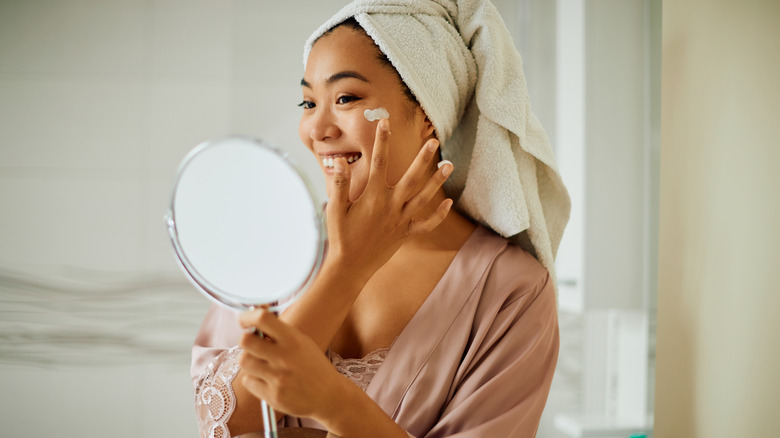Urea: The Smoothing Skincare Ingredient That Is Perfect For Dry Skin
Dry skin can be a pain — from itchiness to flaky and irritated spots, it's challenging to not only deal with but to treat dry and dehydrated skin. When the skin looks dry, fine lines, wrinkles, and creases become even more defined and can make your skin look older (via The Center For Women's Aesthetics). The key to plump, youthful skin is hydration, and urea is a skincare ingredient that can do just that.
According to Medical News Today, urea is waste that's created by the liver, and it is also an organic compound that is naturally found in healthy skin. It draws water into the skin, which keeps it hydrated and glowy. When used in skincare products, urea is created manually and in a lab. It is a common ingredient found in skincare products that works to nourish, exfoliate, and moisturize. If you have dehydrated skin, urea could be the holy grail product you've been searching for.
The benefits of urea
Per Healthline, urea removes dead, flaky skin cells on the outer layer of the skin to promote cell turnover — which results in healthier, dewier skin. This also helps the skin to easily absorb and retain water and moisture. According to CeraVe, urea is a keratolytic agent and works to reduce the appearance of and soothe rough, flaky, and dry skin.
Not only does urea exfoliate the skin and prep it for moisture, but it also works to intensely hydrate the skin. Urea targets dryness and draws in water from the skin to keep it plump, dewy, and moisturized. This staple ingredient can also be used to treat other areas of the body and is most commonly used to treat foot conditions including calluses, dry skin, and fungus. Skincare products with a high concentration of urea can better treat intense dryness and flaky areas (via Byrdie).
How to use urea at home
How you apply and use urea skincare products will depend on the dosage you are using. The higher the dosage, the more urea is present in the product and the more prevalent the results will be. Speak to your dermatologist before choosing a dosage, and let them know exactly what you intend on using the product to treat. Per Byrdie, higher dosage products will be above 10%, within the 20% to 40% range.
Like with any new skincare product, there are mild side effects than can occur with the use of urea. These side effects include skin irritation like redness, itching, and burning. More severe side effects are also possible such as an allergic reaction. Although rare, an allergic reaction can cause sudden swelling, a rapid heartbeat, and labored breathing. If you experience any of these side effects, seek medical assistance right away. Always start with a small amount of product and test it on your skin.


